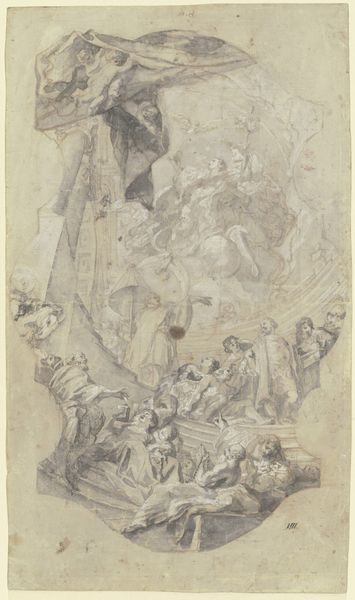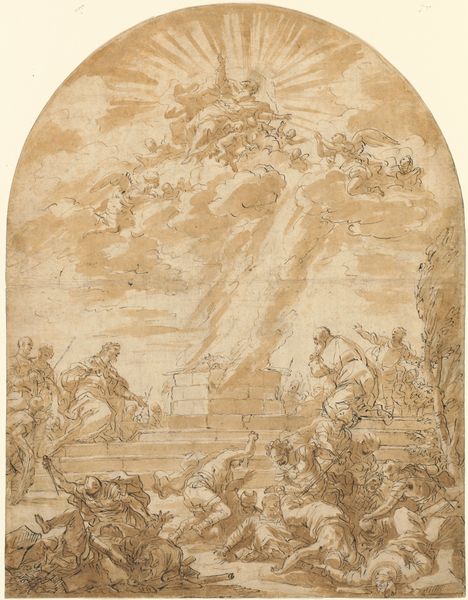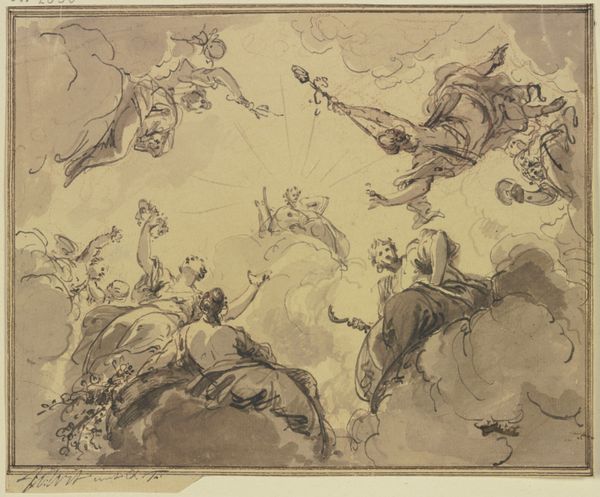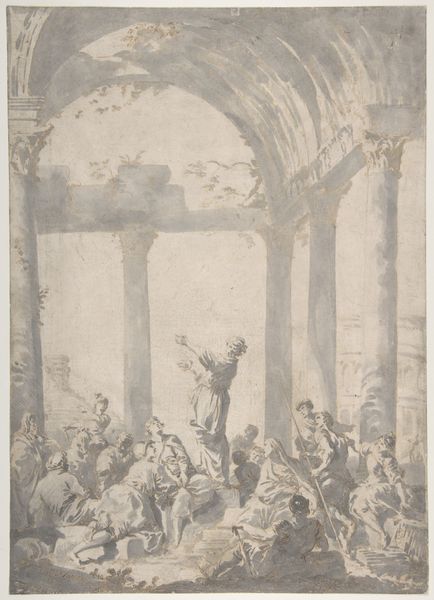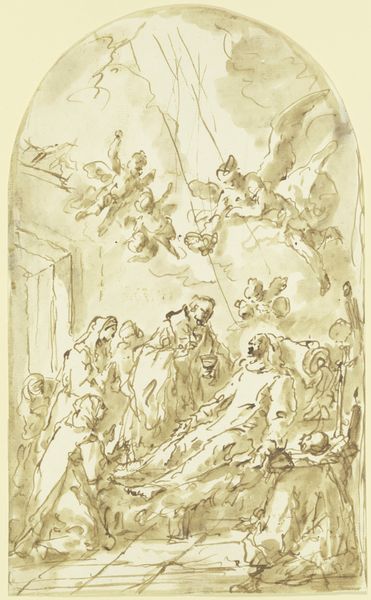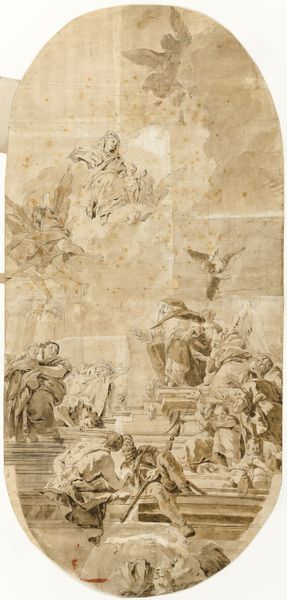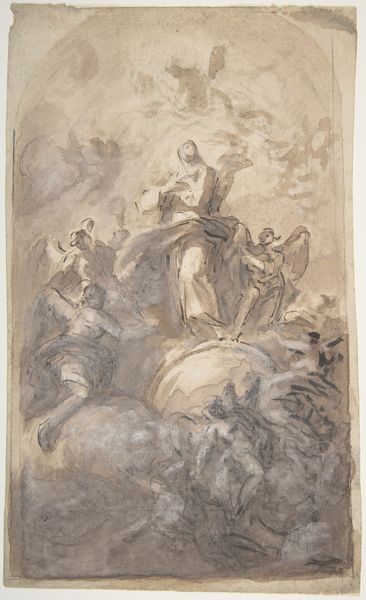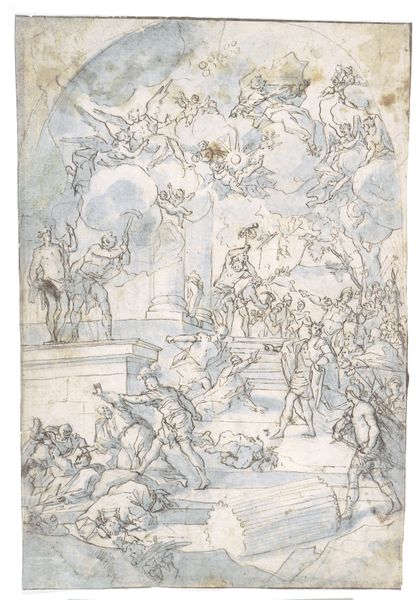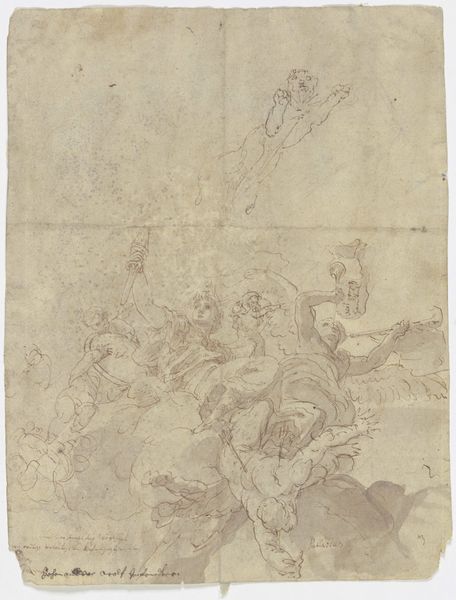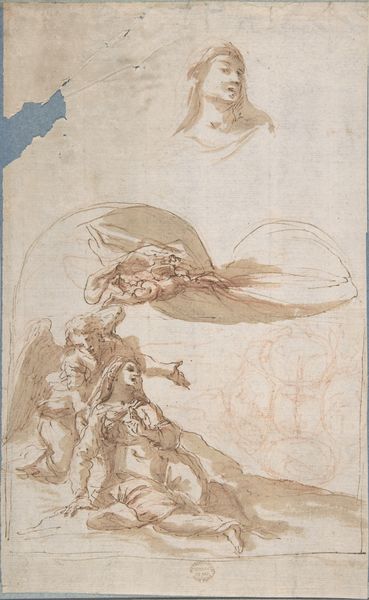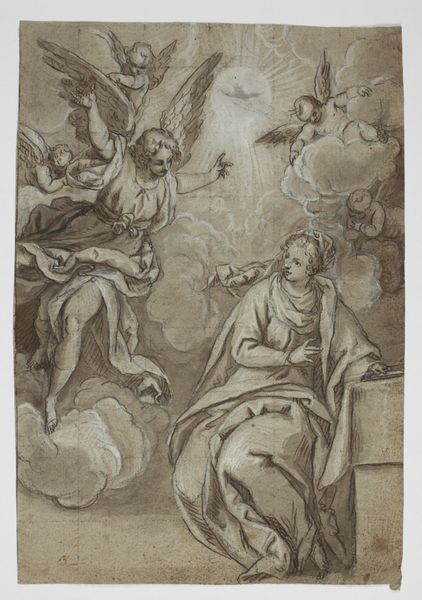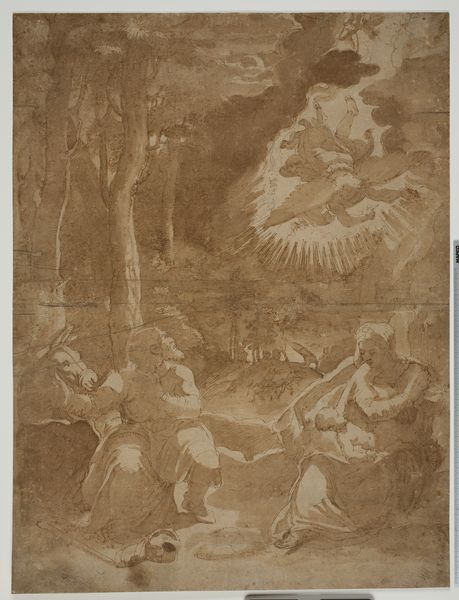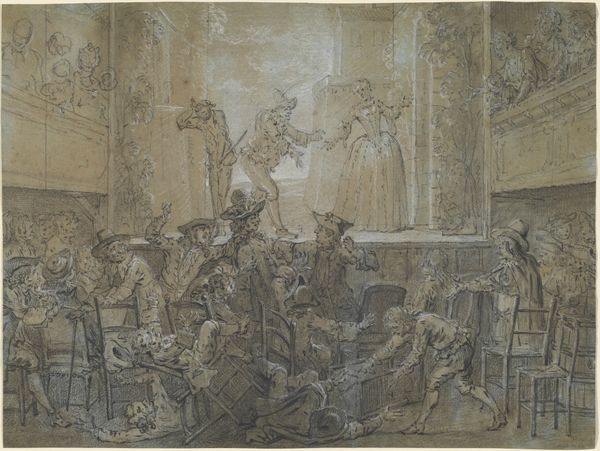
drawing, gouache, ink, charcoal
#
drawing
#
allegory
#
baroque
#
gouache
#
charcoal drawing
#
ink
#
charcoal
#
history-painting
Copyright: Public Domain
Curator: Looking up, we see Matthäus Günther's “Ceiling Design with the Coronation of the Virgin (Fragment)” from around 1752, here at the Städel Museum. It's rendered in ink, charcoal, and gouache. What catches your eye first? Editor: Definitely the dynamism. It's all swooping lines and figures ascending to heaven, caught in mid-motion, even though it's just a fragment. It feels unfinished but also alive with possibility, doesn't it? Curator: Precisely. This preparatory drawing offers insight into Günther’s artistic process for ceiling frescoes, where he meticulously planned the composition and placement of figures. Baroque art often served political and religious agendas, so even at this early stage, every detail needed consideration. Editor: And you can see the grid lines, almost like architectural blueprints layered underneath. I mean, imagining this scaled up on a huge ceiling is breathtaking, right? But I also get a strong sense of performance. All of these people are kind of looking toward one direction and upward—waiting for this huge heavenly coronation to take place. Curator: Absolutely. The performative aspect was crucial, directing the viewer's gaze heavenward, reinforcing spiritual devotion. We’re witnessing a celestial hierarchy unfold above. Though unfinished, the Virgin Mary at the piece's upper-right edge with angels rushing up from below indicates its narrative purpose and function. Editor: Looking at this piece makes me think about the social function of art itself. These elaborate Baroque pieces of art were deliberately engineered to deliver specific effects upon specific communities and audiences, reinforcing structures of faith. And in a way, by revealing the working blueprint for these visual messages, we can glimpse artifice behind art itself. Curator: And consider the collaborative element too—the artisans, assistants, and patrons involved. What was painted on these ceilings reflected power relationships beyond purely artistic inspiration. Editor: It's like seeing the strings behind the grand puppet show. A drawing like this shows those intentions, which make this art relevant to us still. Curator: Yes, a glimpse behind the divine curtain—Günther's careful hand reveals not only artistic skill but also a carefully constructed ideology.
Comments
No comments
Be the first to comment and join the conversation on the ultimate creative platform.
